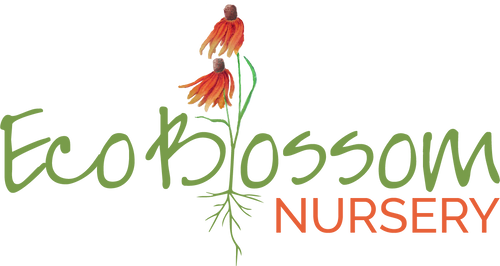Quercus muehlenbergii (Chinkapin Oak)
Also known as Chinquapin oak or Chestnut Oak.
Chinkapin Oak has a slender upright canopy as a young tree that becomes more rounded with age. Emerging leaves are reddish to green and turn a glossy, dark green at maturity. They can reach 4”-6” long and have saw tooth edges. It is relatively fast growing not frequently bothered by insects or diseases.
In some years, Chinkapin Oak produces nice fall color ranging from yellow, orange-brown to deep bronze. It produces acorns that are sweet and sought after by wildlife and humans. Ripe acorns can be taken out of the thin shell and eaten. It takes one season for the acorns to ripen. The tree is drought tolerant once established, and adaptable to a wide range of environmental conditions, including well-drained bottomland soils to rocky limestone hills. It has the ability to withstand dry sites and construction activity.
Chinkapin Oak is also a larval host for the Gray Hairstreak butterfly and the flowers attract hummingbirds in the spring.
Planting Instructions: If the tree is buried too deep in the container, remove excess soil to uncover root collar. Loosen exterior roots gently. If the plant is root-bound, the outer roots may be cut in several places. Place the tree in the hole so that the root collar sits a bit above the ground level since the soil will settle some. Backfill the hole using soil that was dug out. Avoid adding non-native soil if possible. Do not add any soil to the top of the root ball. Pack the loose soil in the hole with your hands to avoid creating air pockets. Add mulch making sure it is at least 3-5 inches away from the tree trunk. Water deeply.
AT A GLANCE
| Texas native | Yes |
| Water use | Medium |
| Sun exposure | Full sun to part shade |
| Bloom time | Spring |
| Mature height |
50-70 ft |
| Mature width | 30-40 ft |
| Attracts | Butterflies, birds, hummingbirds |
| Host plant |
Gray Hairstreak butterfly |
DISTRIBUTION MAPS
 Present in state Present in state |
 Present in county and native Present in county and native |
 Native to North America, but adventive & escaped in state Native to North America, but adventive & escaped in state |
 Not present in state Not present in state |
 Present and rare, native in county Present and rare, native in county |
 Previously present, now extinct Previously present, now extinct |
 Questionable presence (cross-hatched, regardless of color) Questionable presence (cross-hatched, regardless of color) |








